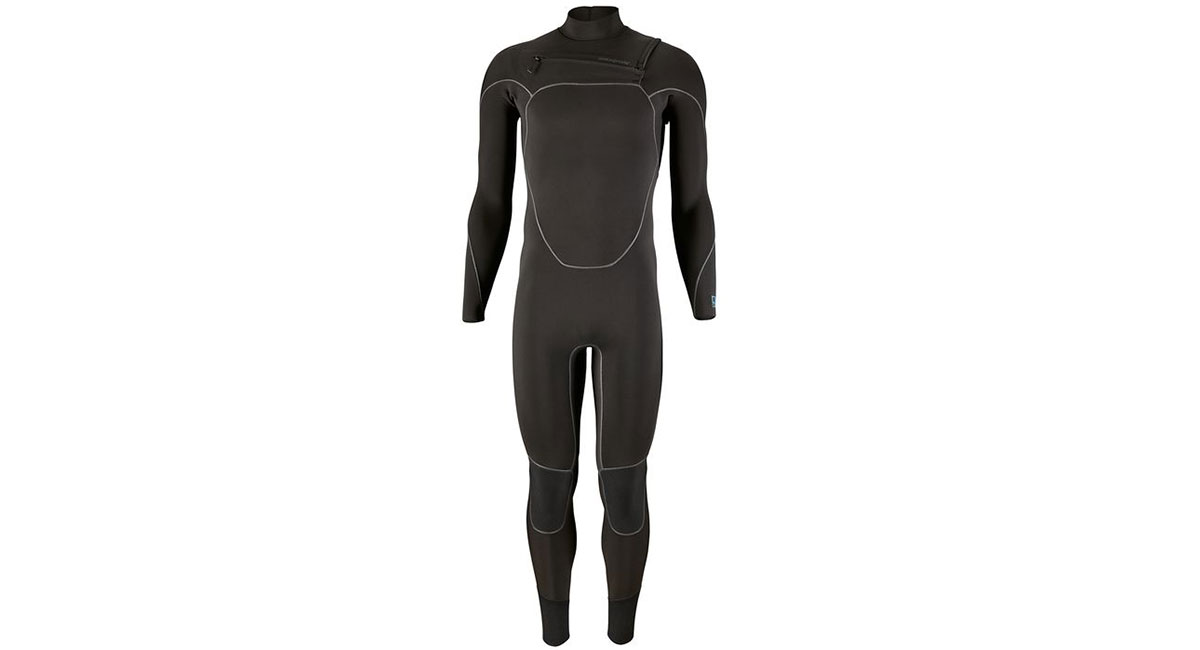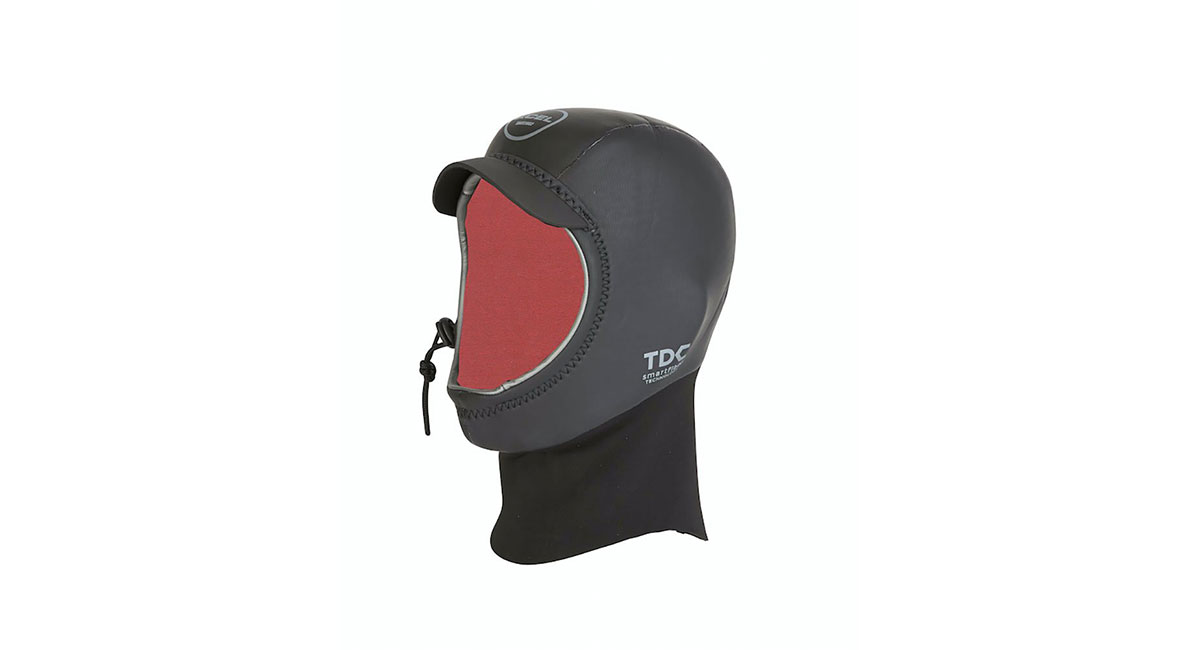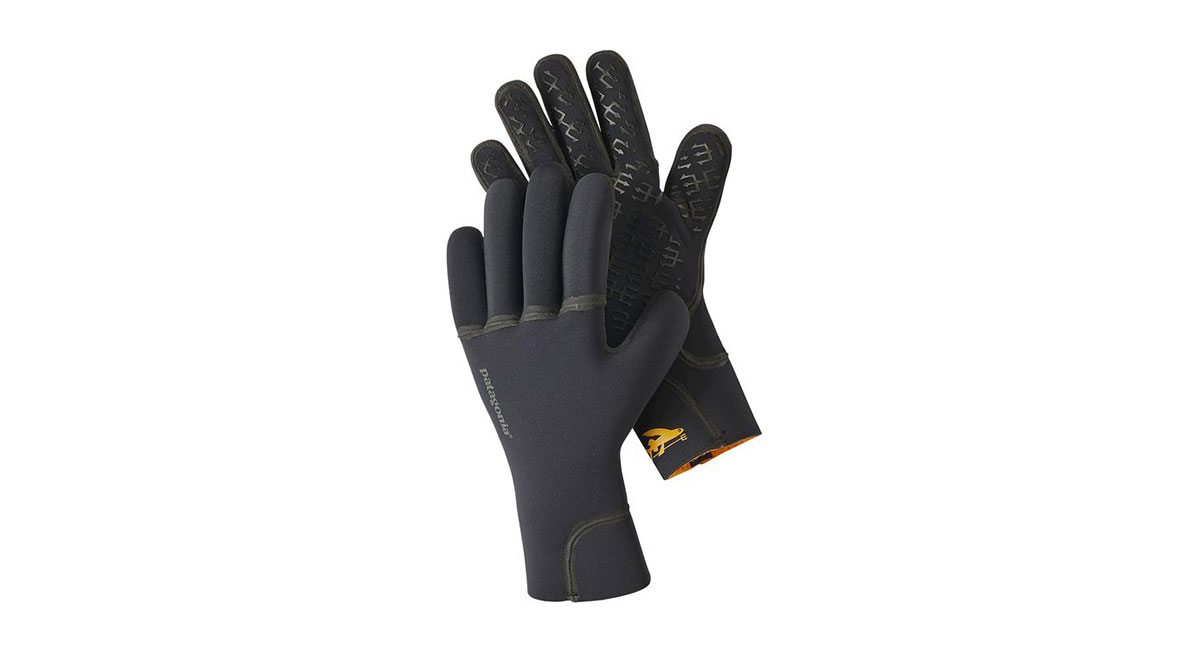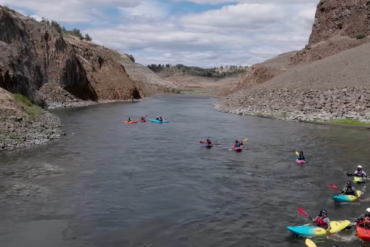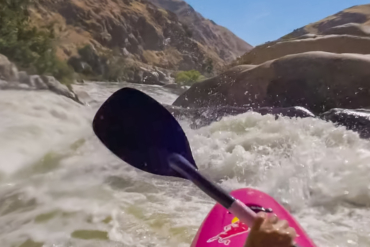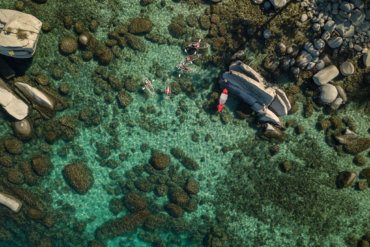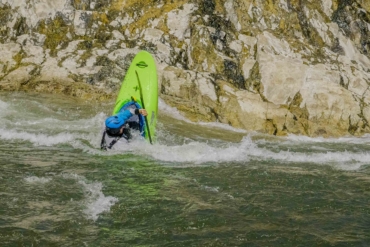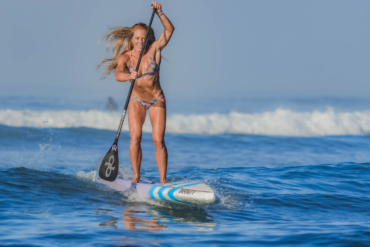Find the best wetsuit and make shivering and chafing things of the past. Suit up and get ready to spend all day in the water.
A wetsuit can be either a surfer’s best friend or their worst enemy. Select your wetsuit carefully, care for it meticulously, and it will perform as intended. You’ll be able to hunt waves with abandon and surf until exhaustion — rather than a brush with hypothermia — sends you packing.
On the other hand, a poorly maintained or oversized wetsuit will leave you shivering and cursing in the lineup. Read on for tips on how to pick a wetsuit, a few of our favorite wetsuits and cold-water accessories, and advice for proper wetsuit maintenance.
How to Pick the Best Wetsuit
Determine the Exact Wetsuit Thickness You Need
Thickness is the most important wetsuit measurement; the thicker the insulation, the warmer the wetsuit. Wetsuit thickness is measured in millimeters. When you see a wetsuit described as a “5/4,” that means that the wetsuit has both 5mm- and 4mm-thick sections.
Generally, the torso will sport the warmer, thicker material to keep the core warm. Sometimes, the legs will sport the thicker material as well, while the arms use the thinner material to allow better flexibility when paddling.
You’ll also occasionally see a wetsuit with three measurements, like a 5/4/3. In this case, the torso will generally be the thickest, then the legs, and, finally, the arms. Keep the core warm without hindering your paddle power — that’s the name of the game.
Wetsuit manufacturers often include a recommended water temperature range in their product descriptions, and they also offer handy wetsuit temperature guides like the one below from Xcel.
You’ll notice that for water temps 46 degrees Fahrenheit and below, Xcel recommends a 6/5 hooded full suit, a 7mm bootie, and a 7mm mitt — all necessary if you’re surfing north of the Arctic Circle and icicles are forming in your beard. When the going gets tropical at 74-plus degrees F, all you need are your swimsuit and a rash guard.
While water temperature guides like this are extremely helpful, the rules aren’t written in stone. A wetsuit can handle slightly colder water temperatures than it’s designed for, especially if you run hot or stay in constant motion.
Likewise, you can rock a wetsuit in warmer water than the brand recommends by removing the hood or unzipping the neck to let a bit of cool water in. Wetsuits are expensive, so the idea of having a wetsuit for every water temperature is untenable for most beginners.

Pro tip: Use Surfline to get an accurate read on water temperatures at your break of choice before buying a wetsuit.
If you surf year-round, it’s only natural that your wetsuit wardrobe will eventually expand, as water temperatures change from season to season. If you’re starting from scratch and you’re on a budget, start with the thickest wetsuit you’ll need.
For example, if you surf in the PNW, a 5/4 with a hood will get you through winter. And while you might prefer to shift to a relatively lightweight 4/3 in summer, you’ll be fine rocking the 5/4.
On the other hand, you wouldn’t want to start with a 4/3, as that would be insufficient during winter when the waves are pumping.
Dial in Wetsuit Sizing Carefully
Properly sizing a wetsuit is a critical step that many people overlook. Wetsuits that are too small will be constricting and uncomfortable. But wetsuits that are too big will let water flush in, causing you to swell up like a waterbed and making paddling more difficult than it already is.
You want a snug, tight fit, but one that doesn’t make you claustrophobic. To find that Goldilocks “just right” fit, you’ll need three things: a tape measure, more time than you think, and a (men’s or women’s) sizing guide.

Once you’ve picked out the wetsuit you want, take a good hard look at the size chart. Remember: Just because you wore a medium from one brand doesn’t mean it will translate to a medium from another. Also, wetsuit sizing variations are often minuscule.
Consider Patagonia’s men’s wetsuit size chart, for instance. Instead of going from small to XL across the typical four sizes, Patagonia’s men’s wetsuits go from small to XXXL. That leaves an overwhelming 13 sizes to choose from, including sizes like a medium tall and large short to match various body types.
Take a close look at the individual measurements — chest, neck, waist, hips, inseam, etc. Then, carefully take all of your personal measurements (it helps to write them down) and compare them to the measurements listed for each available size.
Chances are you won’t match up perfectly to a single size, but don’t get discouraged. If there’s not an obvious choice, your best bet is to buy the two closest sizes, try them on at home, and return the one that doesn’t fit. If that’s not an option, size up — better to be a little loose than too tight.
Best Surfing Wetsuits
Below, you’ll find several wetsuits from top brands that are sure to keep you warm and ripping in temperatures from balmy to downright glacial. If you find a wetsuit you like but its thickness isn’t quite right for your purposes, don’t worry. Each of these suits is available in a variety of thicknesses.
For instance, though we included a 3mm Patagonia Yulex suit in this roundup, the same suit is available in 4mm and 5mm thicknesses, not to mention spring suits and 6.5mm hooded suits for winter missions.
Best Cold-Water Surfing Wetsuit: Xcel 5/4 Drylock X ($364 on Sale)

If you get chilly quickly, Xcel’s hooded 5/4mm Drylock X is the answer to extending your surf session. A powerhouse in the surf market, Xcel has been crafting wetsuits out of Hawaii since 1982.
Despite its tropical roots, the brand’s a favorite among cold-water warriors. The Drylock X series represents the pinnacle of Xcel wetsuit prowess, and the 5/4 can keep you warm in temps as low as 38 degrees.
Ease of entry: Often, a form-fitting wetsuit will require a painful game of tug-o’-war just to get it on. Not so with the Xcel Drylock X — the asymmetrical front zip design allows you to step in with relative ease. Getting out of your wetsuit is always a touch trickier, and it does require a bit of wiggling to pop your left shoulder out of this 5/4, but still, the Drylock is easily unlocked.
Premium comfort and performance: If you’re shucking out $500 or more for a wetsuit, you need it to perform well and be comfortable. The Drylock’s high-pile liner is ultrawarm against the skin, and the Japanese limestone neoprene — which cuts out petroleum from the manufacturing process — is lightweight, flexible, and toasty to boot. Size it right, and this lightweight, quick-drying 5/4 skin feels akin to a 4/3. Also, the seams are kept to a minimum, and the seams that do exist are stitch-free, watertight, and taped.
Minimal flushing: An effective combination of fit and tech keep water from flushing into this hooded wetsuit. The cinchable hood wraps tightly from a modest brim down to a comfortable yet form-fitting watertight collar. Wrist and ankle seals are comparably watertight without being constricting. Assuming you’re rocking this full suit with booties and gloves, even the most frigid waters will feel like home.
See the Xcel 5/4 Drylock WetsuitBest Budget Wetsuit: Quiksilver 4/3 Highline Plus Chest Zip ($170 on Sale)

According to Quiksilver, this is the warmest and most flexible wetsuit it has ever made. And you’ll regularly see it on the backs of Quik’s team of international riders when ripping in cooler temperatures.
Flexibility is on point: We loved the Highline’s WarmFlight thermal fleece lining. It’s snug and cozy against the skin yet stretches and flexes well. Whether flailing along California peelers wave after wave or stretching out before jumping into the water, the Highline can contort into any position you can.
Dreamy seams: Quiksilver’s Highline Plus also has extremely comfortable seams — meaning they are nearly imperceptible. They’re also glued, blindstitched, and taped to ensure the wetsuit’s weak points are wrapped up and waterproof. Similarly, the ankles, wrists, and neck are form-fitting to keep water from flushing the suit. We found the neck on the tight side the first four or five surfs. But after an initial wear-in period, having such a snug seal around the neck quickly became one of our favorite features of the Highline.
Agreeable price tag: While you can certainly find wetsuits for under $200, you often get what you pay for. However, this $340 wetsuit is at the top of Quiksilver’s line.
See the Quiksilver Highline Plus Chest Zip WetsuitBest Eco-Friendly Alternative: Patagonia R1 Yulex 3/2.5mm Wetsuit ($429)
The neoprene manufacturing process, as it turns out, is environmentally hazardous. So it’s no surprise eco-minded Patagonia opted to explore other options. Two years ago, the brand first collaborated with Yulex to craft wetsuits from sustainably harvested, Forest Stewardship Council-certified rubber.
Patagonia’s Yulex suits were the first neoprene-free option to hit the market. And it essentially changed the way the world looks at wetsuit production. Since then, the Yulex suits have received an updated fit.

Patagonia Yulex gets an overhaul: Patagonia claims its newly improved Yulex line is 20% stretchier and 5% lighter than the initial launch. The brand also tweaked the weave of the lining and minimized the seam profile for a less abrasive fit. Plus, the wetsuits now carry the Fair Trade Certified tag. This ensures that workers receive decent wages and factories don’t take shortcuts on workplace safety.
Thumbs up onshore and off: On paper (and in water), Patagonia’s wetsuits are a welcome alternative. The inner liner’s microgrid pattern — rows upon rows of minuscule raised squares — is stretchy and comfortable against the skin. However, we found the seams are definitely noticeable. Still, they didn’t cause any hot spots during long surf sessions. We like the quick-drying properties of this rubber compound and were pleasantly surprised to see how rapidly these wetsuits dried in between sessions.
In it for the long haul: Abrasion-resistant Supratex patches on the knees and ankle cuffs ensure the Yulex suit maintains its structural integrity and shape. Patagonia’s asymmetric chest zipper — which is easy to use and never feels obtrusive while paddling — is actually replaceable. Lastly, all of Patagonia’s Yulex suits are expected to last several seasons (assuming they’re cared for correctly). And Patagonia will repair failures like broken zippers and loose seams free of charge.
See the Patagonia R1 Yulex WetsuitFavorite Surf Accessories: Hood, Booties, and Gloves
A hood, booties, and gloves are absolute essentials for the cold-water surfer. You might have a warm wetsuit, but cold fingers and toes have stopped many surf sessions in their tracks. Here are a few recommendations for staying warm come winter.
Xcel Drylock Hood: $46-50
If you’re looking to squeeze the most out of a hoodless 4/3 wetsuit, tacking on a cheap accessory hood can be a smart play. Xcel’s 2mm Drylock Hood has a contoured, smooth, long neck. This allows you to layer the hood and wetsuit for minimal cold spots. Cinch it down when the water’s icy, or leave it at home if the sun’s out and the waves are small.
See the Xcel Drylock HoodQuiksilver Highline Split Toe Booties: $64-76
We tested these lightweight neoprene booties all throughout the Pacific Northwest and were stoked by their longevity. Even after 30-plus sessions, there’s been minimal loosening or external wear and tear. The split-toe design offers welcome dexterity. And Quiksilver added a rubber guard between the big and second toe to keep your leash from getting tangled between digits.
The curved, molded sole keeps the ankle in place, and a strap over the forefoot ensures that these booties won’t get shaken off should you go over the falls. Though the seams and seals are all up to snuff, we have noticed some cosmetic fading of the logo over time.
See the Quiksilver Highline Split Toe BootiesPatagonia R3 Gloves: $75
Patagonia offers regular gloves, three-fingered lobster claws, and traditional mitts across its Yulex line. The R3 gloves we tested came in handy during rainy sessions in Canada. They’re flexible, fit well, and don’t flush with water. However, the inner seams are more abrasive than you’d hope for.
See the Patagonia R3 Gloves3 Tips for Wetsuit Maintenance
Fail to take care of your wetsuit, and the investment you made is pointless. Now that you’ve got your gear dialed, here are a few parting tips for maintenance.
Rinse It
Always take the time to rinse out your wetsuit. Use fresh water and be thorough (that means rinsing it inside and out). Simply sticking your head under an outdoor shower on the way to your car isn’t going to cut it, though it is better than nothing. Occasionally, use wetsuit shampoo or wetsuit cleaner to further the freshness.
Hang It
Rinsing alone isn’t enough. Hang up your suit to dry, preferably inside and definitely out of the sun. Also, when you do hang it up to dry, make sure to flip the suit inside out every so often. This helps both sides of the wetsuit dry at the same speed.
Remember the Golden Rule
Generally, the golden rule is “treat others how you would like to be treated.” With wetsuit maintenance, the golden rule is much easier to follow: Don’t piss in your wetsuit. Peeing in your wetsuit won’t just ruin the neoprene, it’s also really, really, really gross.



